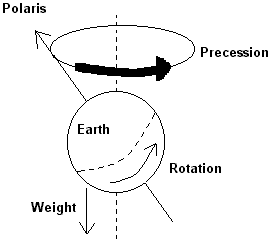Hipparchus
(Greek, 190 B.C. - 120 B.C.)
There is not a lot known about Hipparchus but there is enough to realize that his contributions were the beginning of our understanding the universe.
He was the first ancient astronomer to compile a star chart which contained approximately eight hundred and fifty stars. He proceeded to divide the stars into six categories according to their apparent brightness. The brightest stars were first class and the next fainter stars were second class, right down to the sixth class. In other words, the larger the magnitude number, the fainter the star. Years later when the telescope was invented, many more classes were added. The naked eye could not possibly see the many stars beyond its vision and the telescope was able to view greater distances which found many more fainter and brighter stars.
By comparing his star charts to those made almost two centuries earlier, he discovered that the position of the North Celestial Pole had changed its postion over the previous one hundred and fifty years. Years later, astronomers were able to determine that this precession was a key factor in the way the earth moved. Precession can be explained simply by the spinning motion of a spin toy. The motion of the spin toy, once it begins to slow down will take on a gyrating movement. The combination of it's mass and the spinning cause it to move in this way. By observing the tip of the toy, one can easily see that it completes a circle. When Hipparchus translated this to the movement of the earth, he came to the understanding that the celestial bodies would change position over time. It was later discovered that every 26,000 years, the earth would complete one cycle.

Hipparchus also proposed that the sun and moon travelled around circles rather than on nested spheres as other astronomers believed. He felt that the earth travelled near but not at their centers. This is what we now call eccentric, which are basically off-center circles. He was able to devise the idea that the sun traveled in its own circle which followed another larger circle around the earth. The stage was now set for the next great astronomer, Ptolemy.
|
|
|
|
![]()
You are invited guest number :
This page hosted by ![]() Get your own Free Home Page
Get your own Free Home Page